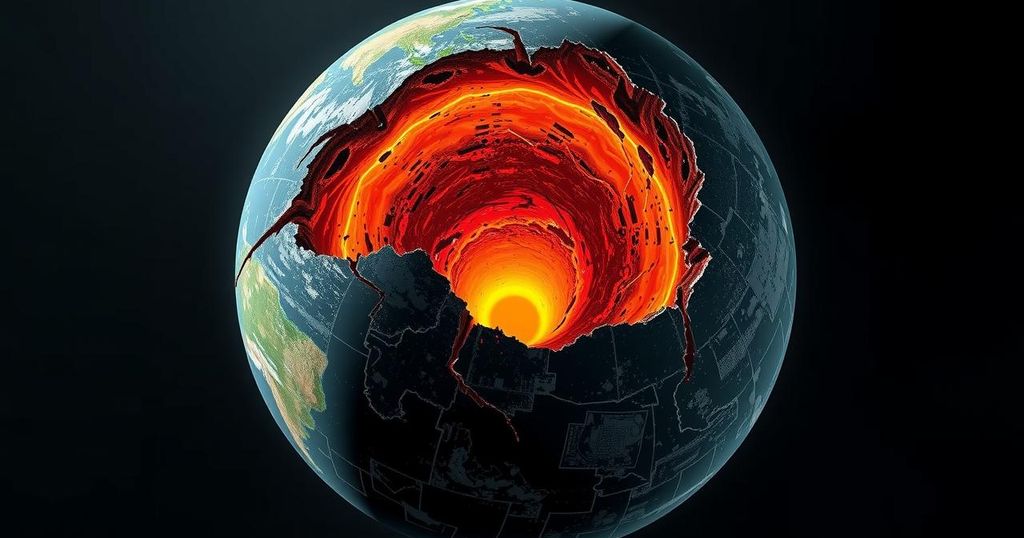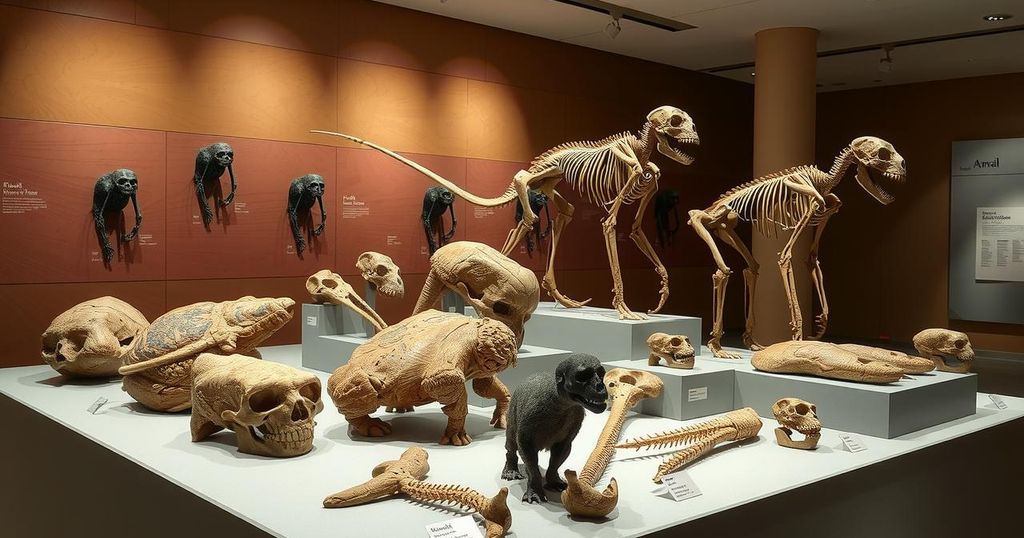Earth’s Inner Core Slows Dramatically, Possibly Moving Backward
Scientists confirm that Earth’s inner core is moving backward, a shift reflecting a dramatic deceleration that follows a 70-year cycle. This discovery is rooted in seismic research, suggesting both implications for the Earth’s magnetic field and ongoing debates among scientists regarding the nature of this core movement. Future research is crucial to fully understand the impact and structure of the inner core.
Buried deep within the Earth lies a profound mystery—the solid metal inner core—an enigmatic sphere that spins independently, reminiscent of a top whirling within a larger one. This unique inner core, mostly composed of iron and nickel and burning hotter than the sun, has intrigued scientists since its discovery by Danish seismologist Inge Lehmann in 1936. Recent evidence indicates that the inner core’s rotation is not only slowing but may have reversed direction, a finding that stirs both curiosity and debate in the scientific realm.
Researchers have spent decades examining the movements of this inner core, primarily through the lens of seismic waves generated by massive earthquakes. This indirect approach allows seismologists to decipher the core’s rotation by analyzing how these waves behave when they travel through different layers of the Earth. However, the inherent challenges of directly observing the deep interior of our planet have led to conflicting interpretations about the core’s spin and its implications.
In a groundbreaking 2023 study, a model emerged suggesting the inner core’s spin has fluctuated dramatically, transitioning from faster than Earth’s rotation, to matching it, and now—alarming yet fascinating—moving backward in relation to the fluid outer core. This intriguing theory was recently bolstered by new findings published on June 12 in the journal Nature, which provided compelling evidence for this slowdown and confirmed a 70-year cyclical pattern of core rotation.
Dr. John Vidale of the University of Southern California emphasized the significance of this confirmation, declaring, “I think we’ve ended the debate on whether the inner core moves, and what’s been its pattern for the last couple of decades.” Yet, despite this fervor, the scientific community remains divided on the broader impacts of this core rotation on Earth itself. As our planet spins, the enormous gravitational forces and movements of the molten outer core exert influence, creating a complex interplay between these layers.
“Although the inner core’s direct influence on the magnetic field is unknown, scientists suggest that a slower-spinning core could affect it and potentially shorten the length of a day,” Vidale added. As we know, the Earth’s magnetic field is crucial for shielding us from solar radiation, and understanding the core’s role in this protective field is vital.
The methodologies used by researchers have evolved over the years, but one key approach remains: tracking seismic waves, specifically P waves and S waves, as they traverse the core. This meticulous analysis uncovers varied patterns and changes, revealing that from the 1970s to the 2008, the inner core accelerated before slowing to a reverse motion that began approximately from that year onwards.
By examining seismic activity from earthquakes and historical data from nuclear tests, scientists have charted the inner core’s shift with newfound precision. The results not only reaffirm a cyclical nature of the core’s movement but also hint that soon, in five to ten years, we might witness another acceleration of its spin. However, uncertainties linger, emphasizing the depth and complexity of the challenges faced in studying such a remote region of our planet.
Ultimately, while the implications of these core dynamics might be imperceptible at the surface—affecting the planet’s rotation by only fractions of a second—a greater understanding of the inner core could unlock vast knowledge about Earth’s formation and the intricate interactions between its layers. As Dr. Lauren Waszek aptly noted, we need further interdisciplinary tools and data to deepen our knowledge and continue this captivating journey into the heart of our planet.
The inner core remains a realm overflowing with potential, awaiting the next scientific revelations that will shed light on its mysteries alongside the dynamics of the outer core and mantle, where the solid meets the fluid—a cosmic dance that shapes our very planet.
The inner core of the Earth has been a topic of fascination and research since its discovery, as its movement is not directly observable. Scientists use seismic waves to infer the core’s behavior and understand the dynamics of the Earth’s interior. Recent research has suggested significant changes in the core’s rotation, introducing debates about its implications on phenomena like Earth’s magnetic field and day length. This ongoing inquiry mirrors the broader quest to understand Earth’s complex structure and interactions.
The recent findings regarding Earth’s inner core reveal a fascinating and complex interplay of forces and motions deeply hidden beneath our feet. As the core slows and appears to move in reverse, scientists are not just observing movement but unearthing insights into Earth’s past and potential future. Although the core’s influence might be subtler than initially perceived, it intricately connects to the planet’s magnetic field and rotation, highlighting the need for continuous research in unraveling Earth’s mysteries.
Original Source: www.cnn.com




Post Comment